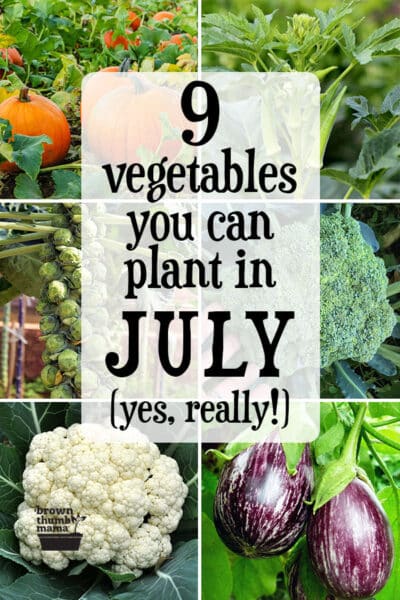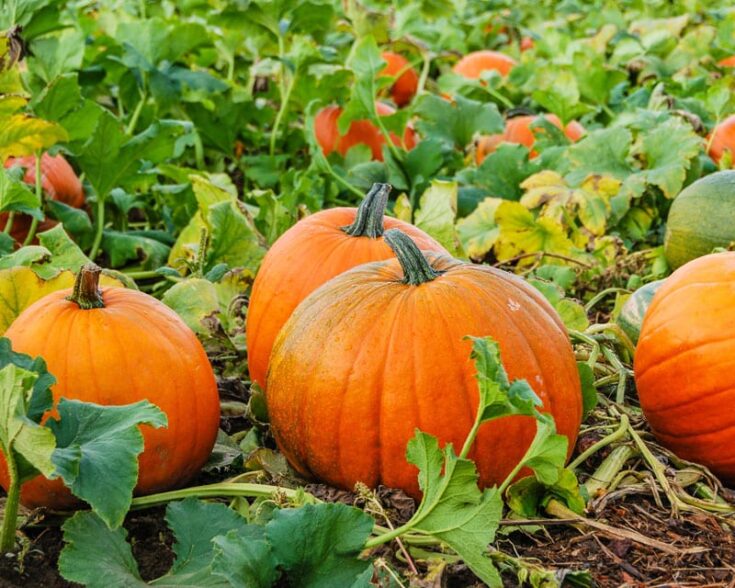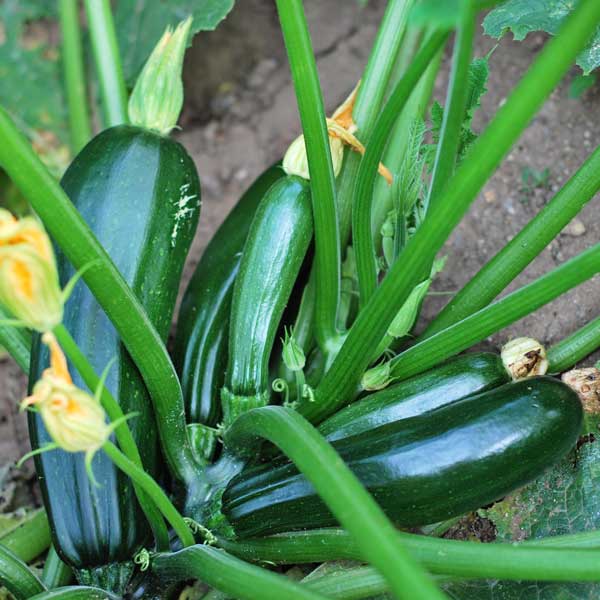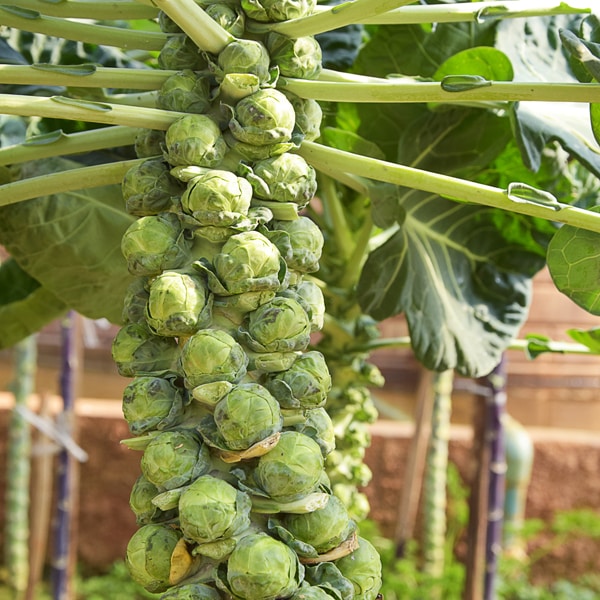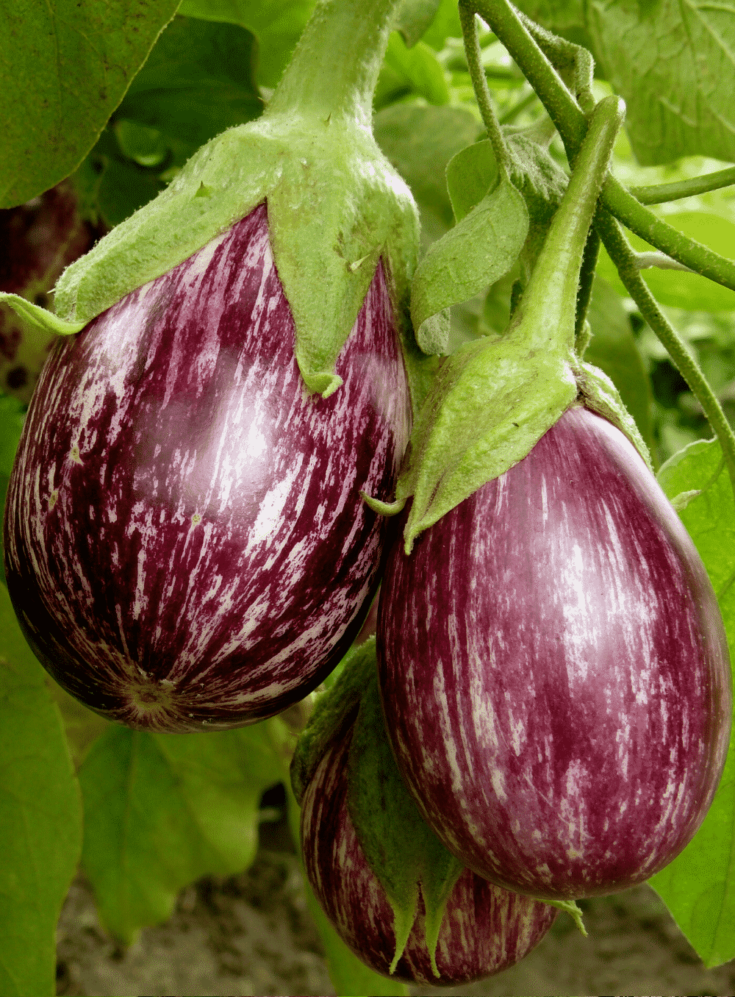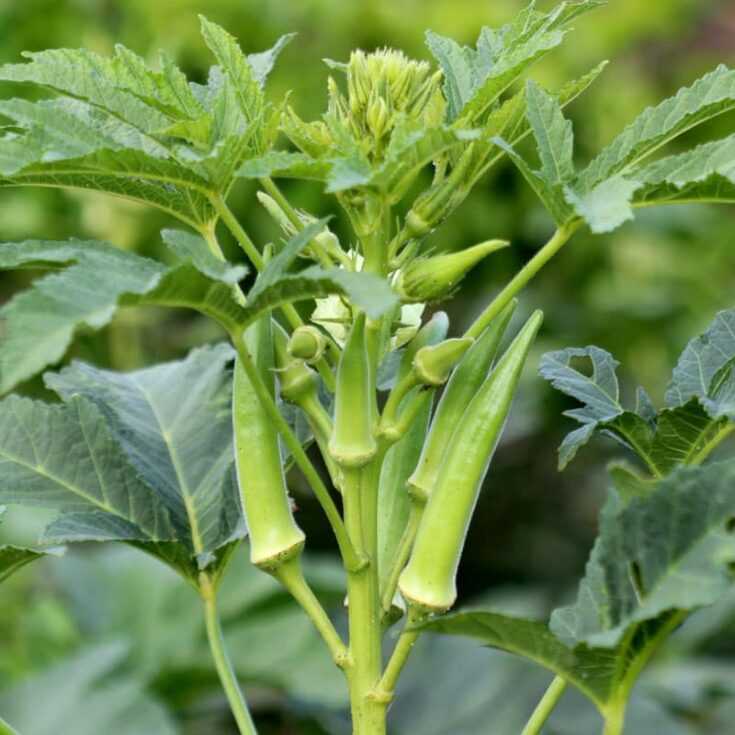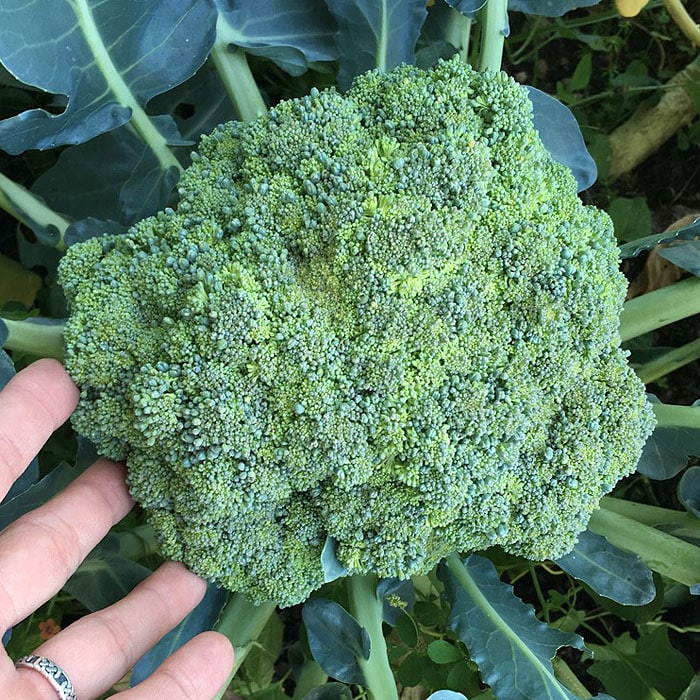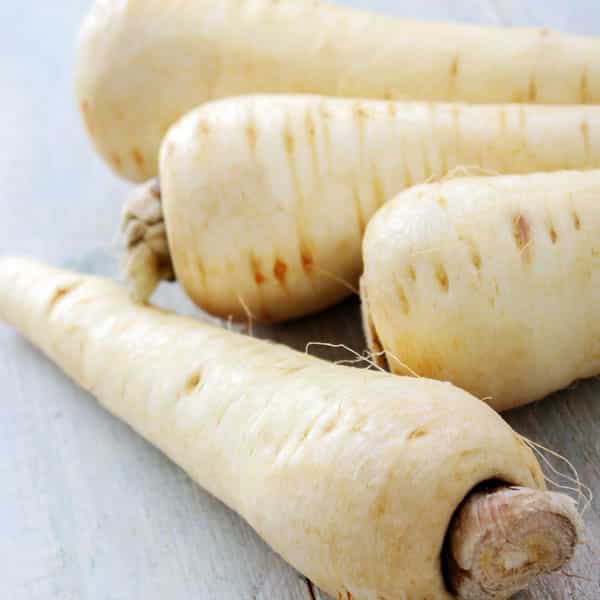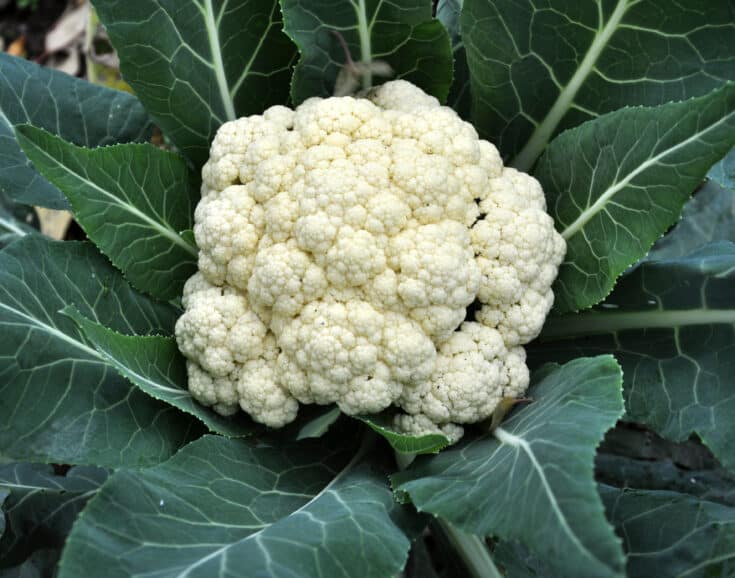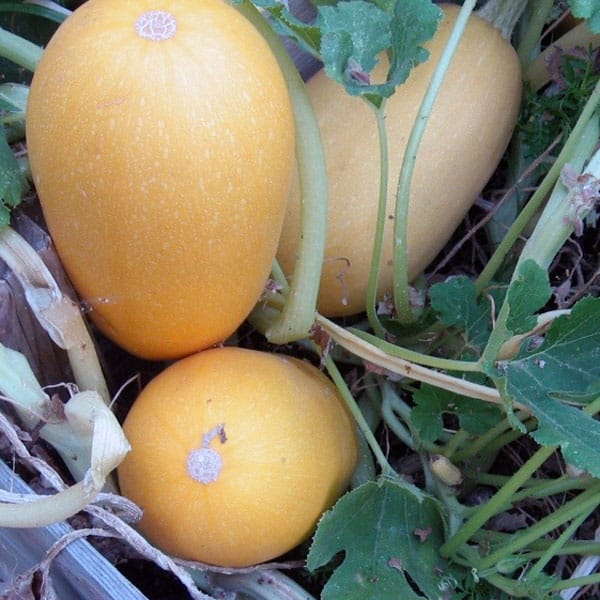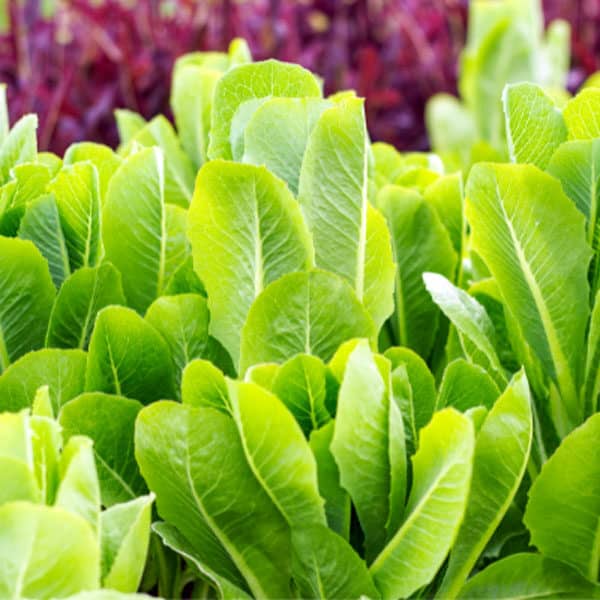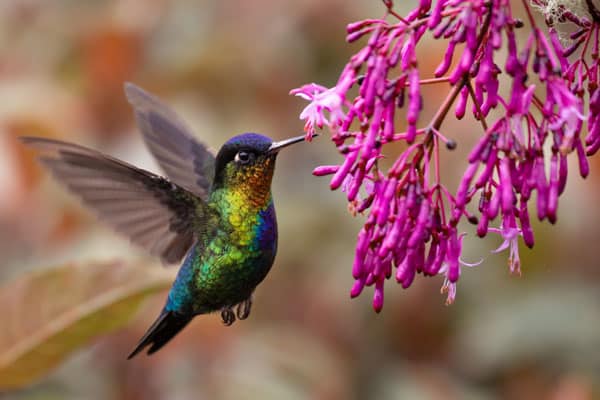This post may include affiliate links.
If you make a purchase, I'll earn a small fee at no extra cost to you.
You can start a vegetable garden in July! Plant these 9 vegetables in July for a huge harvest this fall. Includes recommended varieties, planting tips, and recipes.
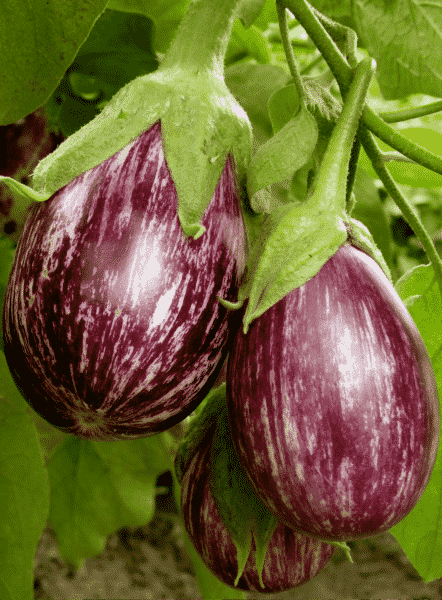
Ahhh, July…everyone else is basking in the sun, swimming and eating homemade fudgesicles, and us gardeners are worried about protecting the soil with mulch and getting rid of aphids.
You might think that it’s too hot to plant vegetables in July, but that’s not the case! In most parts of the country, there are heat-tolerant vegetables that will happily grow in your garden. Not sure what planting zone you’re in? This interactive map will tell you.
Are you a brand new gardener? Not sure what to plant or when to plant it? I can help.
You’ll find lots of great information in my new book, The First-Time Gardener: Container Food Gardening.
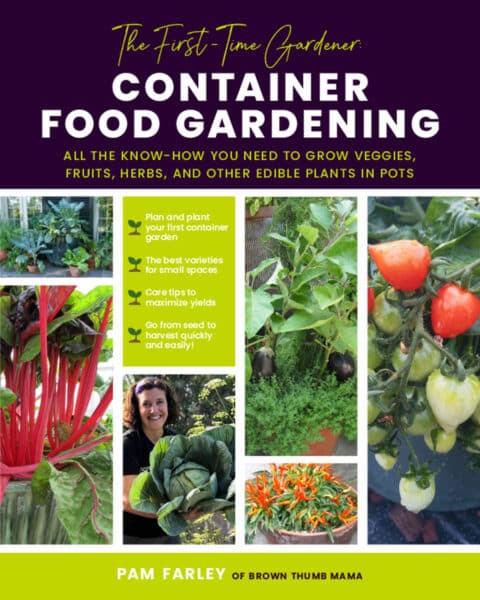
Here in Zone 9 we have a long planting season, but it gets ridiculously hot in summer. For July planting, you want vegetables that mature quickly—90 days or less to maturity is good to shoot for.
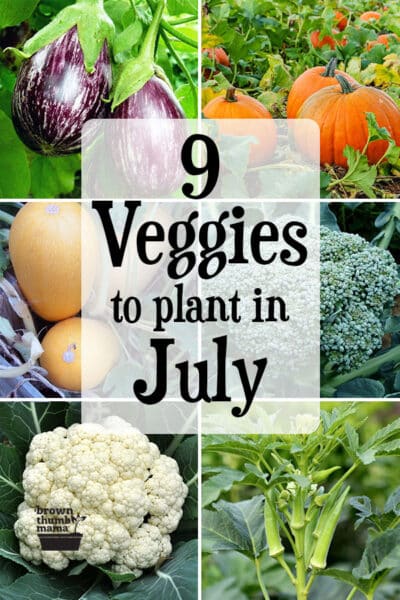
9 Vegetables to Plant in July
Pumpkins are easy to grow from seed, and there are many different types--teeny decorative pumpkins, white pumpkins, carving pumpkins, pumpkins for making pies, novelty pumpkins covered in warts...it’s hard to decide.
Varieties: I like to grow Howden pumpkins for making jack-o-lanterns, and Lumina, which are white pumpkins, to surprise the kids.
Planting: Pumpkins are easy to grow and need lots of space. Here are my tips on growing and planting pumpkins.
Recipe: Once you harvest your pumpkins, save the seeds and make Roasted Pumpkin Seeds.
Zucchini and summer squash are the easiest vegetables to grow from seed. A couple of plants will produce more squash than most families can eat! This is probably why there’s a gardeners’ holiday called “Sneak Some Zucchini on Your Neighbor’s Porch Day”.
Varieties: Cocozelle is delicious and buttery. It's beautiful, too: the dark green fruits have light green vertical stripes.
Planting: Start zucchini from seed in July and you'll be eating it as early as September. Haven't grown it before? Here’s everything you need to know about planting and growing zucchini.
Recipe: Shred zucchini and add to Homemade Spaghetti Sauce, or make Zucchini Fritters.
If you haven’t grown Brussels sprouts before, you are in for a treat. These “baby cabbages” grow on a single stalk like a tiny palm tree.
Varieties: Long Island Improved is my favorite variety. It's been a reliable producer since it was developed in the 1890s...yep, 130 years ago!
Planting: This month, start seeds indoors using DIY Seed Starting Mix, and transfer out to the garden in September. Don’t worry if you get a cold snap before you harvest in December—a light frost actually improves their flavor.
Recipe: Brussels sprouts are so tasty when sauteed with sweet potatoes and bacon.
Eggplant likes it HOT, so July is a great time to plant it. If there are seedlings available at your local garden center, you'll be enjoying eggplant from your garden in October.
Varieties: Listada de Gandia (pictured) is a beautiful French heirloom. Black Beauty is another favorite for its large size and thin skin that you don't have to peel.
Planting: Plant seedlings 18 inches apart--happy eggplants grow into bushes nearly 2 feet tall and 16 inches wide.
Recipe: Instant Pot Eggplant Pasta gives you all the delicious flavor of Eggplant Parmesan without the work.
Okra, like eggplant, is a vegetable that likes hot weather. It’s tough to start them from seed (they only have a 50% germination rate), so get seedlings from the garden center if you can.
Varieties: Clemson Spineless 80 is a reliable variety. It’s called “spineless” because okra plants have tiny hairs (spines) all over them that can cause an allergic reaction. You may want to wear gloves when harvesting them in September.
Planting: Okra plants can get big and bushy, so give them about 2 feet space to spread out.
Recipe: There's more to okra than breading and frying. Sheet Pan Bhindi Masala is easy and delicious.
We call broccoli "happy little trees" as a tribute to Bob Ross. There's nothing like the sense of accomplishment you get from growing broccoli--they're definitely rare in home gardens.
Varieties: Broccoli Di Cicco is my favorite--it reliably produces large heads and then continues to produce smaller offshoots after the main harvest.
Planting: Start your broccoli seeds indoors using DIY Seed Starting Mix, and transfer out to the garden in September.
Recipe: Roasted Broccoli with Garlic and Parmesan is an easy recipe the kids will love.
Parsnips are persnickety…they’re hard to start from seed, but can’t handle being transplanted. This is why you don’t see parsnip seedlings at the garden center. Also, the seeds don’t keep from year to year, so you need to buy new seeds each year.
The reward for all this coddling is sweet, buttery parsnips. Roast them in the oven and you’ll see why I go to all the trouble to grow them.
Varieties: Gladiator parsnips have a good germination rate and grow up to 10 inches long!
Planting: Plant seeds 1/2 inch deep and 3-4 inches apart in loose soil, and water thoroughly through the growing season.
Recipe: Peel and cut into coins or half-moons. Toss with olive oil, RealSalt, and pepper; roast at 425F for 30-40 minutes.
Yes, everybody is turning cauliflower into stuff like pizza crust and rice, but it's still delicious roasted, with a splash of lemon juice.
Varieties: Snowball Y cauliflower is ready to harvest in just 75 days, so you'll be eating cauliflower before you know it.
Planting: Start your cauliflower seeds indoors using DIY Seed Starting Mix, and transfer out to the garden in September.
Recipe: Cauliflower and Butternut Squash soup is perfect for a crisp fall day.
Spaghetti squash, acorn squash, and butternut squash are just a few of the delicious winter squash you can plant this month.
Varieties: I've had good harvests during the last several years with Vegetable Spaghetti Squash and Waltham Butternut Squash.
Planting: Most winter squash have long vines and don't like to be transplanted. Start the seeds directly in the garden, giving them plenty of space to spread out. Not sure when to harvest? Here's how to tell when your spaghetti squash are ready to pick.
Recipe: Spaghetti squash is easy to cook in the Instant Pot. Cut it in half, scoop out the seeds, and put in the IP with 1 cup of water. Cook on High Pressure for 7 minutes and do quick release. Done!
Want to know what to plant every month?
Knowing which vegetables to plant in each growing season ensures your plants will thrive and give you a great harvest. Check out my Vegetable Garden Planting Schedules so you know exactly what to plant each month of the year.
